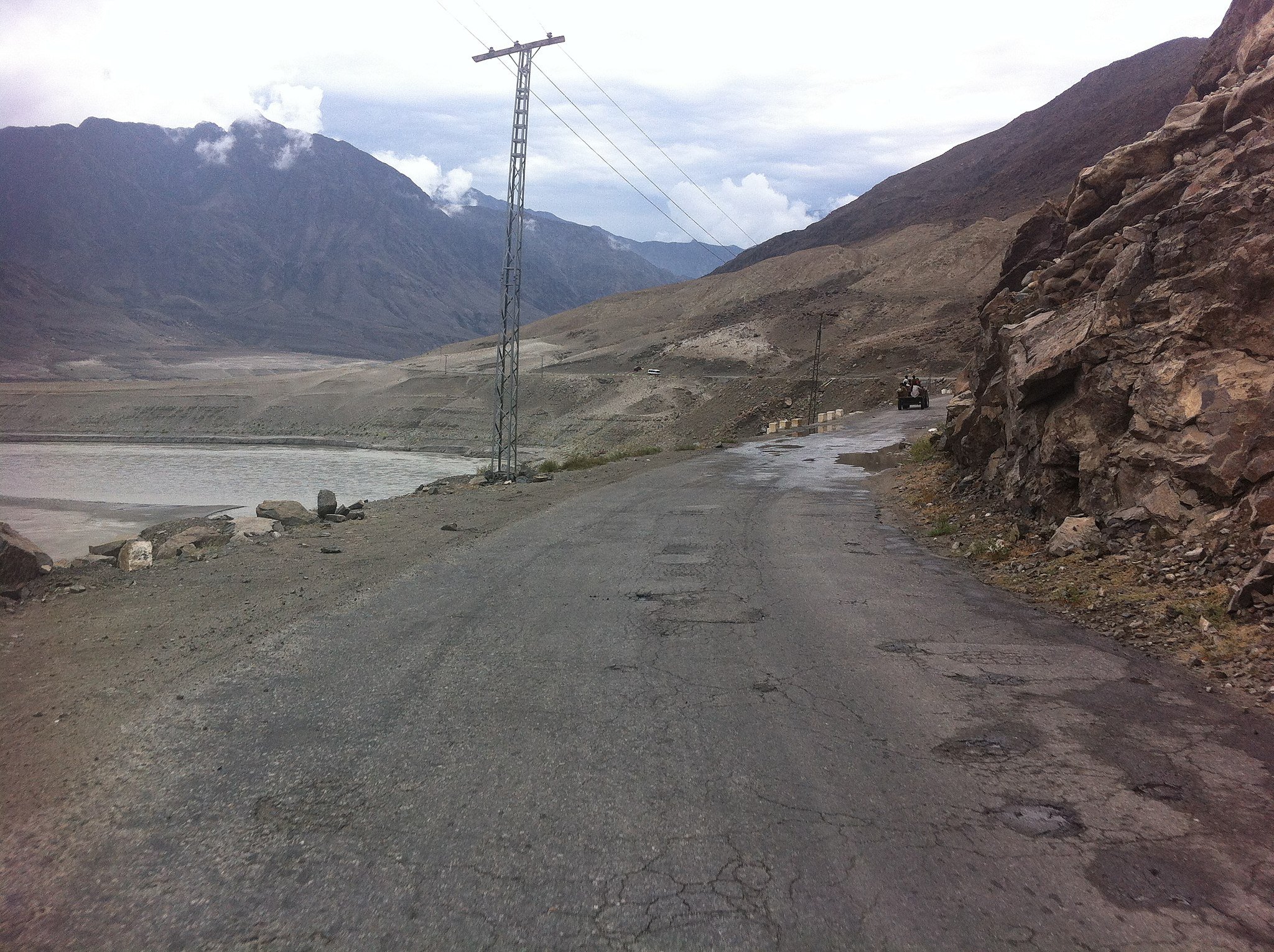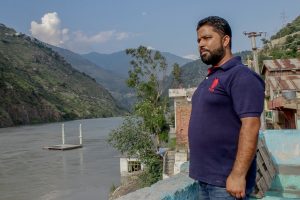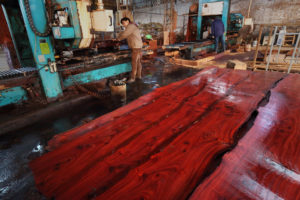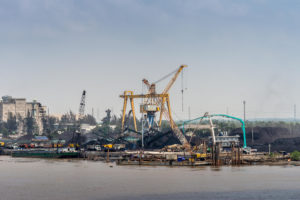Imran Khan, the prime minister of Pakistan, has vowed to build the “biggest dam in Pakistan’s history”. The 272-metre-tall Diamer Basha dam will be able to store up to eight million acre feet (MAF) of water. Khan has also promised to build more dams to generate “clean electricity”; this one will generate 4,500 megawatts.
Not all are convinced, and some have been voicing their concerns at the risk of being termed enemies of the nation. One such person is Saif M Hussain, who trained at the California Institute of Technology and Stanford University, and has more than 40 years of experience in structural engineering in seismically sensitive zones.

Hussain has worked on the Hub, Khanpur and Kurram-Tangi dams and the Chashma barrage in Pakistan, and been part of dam project teams in Libya and Thailand.
See: Pakistan breaks ground for dream dam project at Diamer
Hussain is worried about the new dam, and said he hopes that if it is pursued, “no stone is left unturned to properly and completely assess, account for and mitigate against the risk created by building such a project in such a location.”
He spoke to The Third Pole about his concerns.
The Third Pole (TTP): Have dams been built previously in earthquake-prone areas in Pakistan?
Saif M Hussain (SMH): Most dams in northern Pakistan and many areas in Balochistan are in regions of high-to-moderate seismic hazard. The northern mountain ranges like the Himalayas and Karakoram were formed over millions of years as a result of ongoing tectonic collisions. Regions adjacent to the movement, including the north-south aligned interfaces going from the Indian Ocean to Kashmir, are also seismically active with varying degrees of hazard and risk.
Consequently, most large dams, like Tarbela, Mangla and the Neelum-Jhelum are exposed to significant seismic hazard. In fact, in the north of Pakistan there is no single tectonic interface but multiple interfaces/main-fault zones which can be potential sources of non-localised, deadly earthquakes.
TTP: Have dams been built in seismic zones in other parts of the world?
SMH: There are thousands of dams in areas of significant seismic hazard. Many have failed or been damaged as a direct result of earthquakes or via surrounding ground failures such as major landslides. The San Fernando dam is a few miles north of where I live in Los Angeles. In the 1971 San Fernando earthquake, this dam failed and came within a few feet of being overtopped, threatening hundreds of thousands of people living downstream. The 2008 Wenchuan earthquake in China affected many dams. In the 2001 Bhuj earthquake in Gujarat, India, over 200 dams were damaged. The 2011 Tōhoku earthquake in Japan damaged 400 dams; in one case eight people were killed due to a single embankment failure.
See: Himalayan dams become economic burdens: lessons for Etalin
TTP: Then why are dams built in such areas?
SMH: Site geology and topography are major factors in siting dams. The same geology, topography and hydrology that favours dam siting (mountainous/hilly terrain, large/deep valleys with high flow-rate rivers) is often concomitant with seismological phenomena which have created those conditions to begin with. For example, if it were not for the tectonic collision between the India and Eurasia plates, the mountains and valleys through which the upper Indus river and tributaries flow would not have formed and favourable locations for dams would not exist. It is a double-edged sword. An interesting example of damming an earthquake fault-formed valley to create a reservoir is the Crystal Springs Reservoir in northern California. The lake sits directly on top of the great San Andreas Fault which created those conditions in the first place. The same fault generated the San Francisco earthquake of 1906 which destroyed that city.
TTP: Do you think the Diamer Basha dam is a mistake because it is being built in a seismic zone?
SMH: I cannot say that dam construction in any seismically active area is a mistake. There are numerous factors that underpin decisions to build dams in particular locations, some of which have nothing to do with natural processes and scientific/engineering/technical issues.
Now, there would be no-brainer arguments against building in certain areas, such as right on top of a known and active large earthquake fault where ground displacement is bound to occur sooner or later, tearing apart the structure regardless of how well designed it may be. Or building on top of or adjacent to an active landslide area.
TTP: If Diamer Baasha has to be built, what safety measures do you suggest?
SMH: The government of Pakistan must bring together not only the best-possible design and construction team, but also the best-possible independent third-party panel of seismic experts to implement and oversee the design and construction of this mega project, and to do so without further delay.
The cost of such an effort is minuscule compared with the potential future cost of overlooking this critical aspect of such a project.
TTP: What advice would you give to the engineers designing this dam?
SMH: Cutting-edge seismic expertise, not just dam design expertise, must be brought to bear on this unique project, and multiple layers of vetting and oversight are required.
But as much as we need dam seismic design experts, we also require experienced experts to design and review the other important parts of the project, such as the power plants.
Another specialised area is that of earth/slope stability: landslides can cause indirect reservoir and dam failure even if the dam itself does not fail during a large earthquake. However, it all starts with a proper seismic hazard assessment which underpins all the rest of the engineering work required for a major project in a high seismic hazard area.
TTP: If the dam bursts due to an earthquake, say of the same 7.6 magnitude as the Kashmir one, what will be the extent of destruction?
SMH: ‘Bursting’ or total failure of a mega dam like the Diamer Basha should be considered a doomsday scenario and must be prevented at all costs. The losses in terms of human life, the environment and the economy would be nothing short of cataclysmic.
See: Uzbekistan dam collapse was a disaster waiting to happen
TTP: Do you think the government understands the risks involved in building this dam?
SMH: It is hard to imagine it is not aware of the serious inherent seismic risks of this project. However, having worked in that region since 2005 with many of the leading earthquake science and engineering experts in the country, I daresay that the earthquake hazard and risk assessment and mitigation strategies applied on the project thus far may not fully meet the demands of the situation.
TTP: During Imran Khan’s recent visit to the Diamer Basha dam site he said there was no better site than where it was being constructed and called it a ‘natural’ dam.
SMH: There is no such thing as a man-made ‘natural dam’, with all due respect. In the developed world not one single country is building large dams any longer. We seem to follow western ways and ideas quite a bit these days but often lose the thread when it comes to such important lessons emanating from there.
See: Arunachal Pradesh poised to restart dam building spree
TTP: Can dam/reservoir building trigger earthquakes? Can this be predicted?
SMH: This is a well-known and fairly common occurrence in large dams with large and deep reservoirs. Some dams will show a greater propensity for this ‘induced seismicity’ than others. It mostly depends on the surrounding geology, the reservoir configuration and variation in terms of space and time. Take, for example, the 2019 Mirpur earthquake measuring 5.7. I was recently informed by a colleague that studies show it was most likely caused by the Mangla dam reservoir depth enhancement project.
See: South Asia needs a transnational seismological organisation
TTP: What do you think of Khan’s recent statement praising China for building 5,000 big dams?
SMH: In today’s much more environmentally conscious world, proposed mega-dam projects should be scrutinised and studied much more carefully than was done in the past. The environmental impact of such projects is massive and lasts for hundreds of years. In fact, the longer-term impacts of altering the natural environment in such an extensive and intensive manner are not even accurately quantifiable, even by the best scientists and engineers in the world. These are akin to global warming and climate change, which today are scientifically proven facts, but in the previous century the most developed and advanced societies failed to recognise or consider as they plowed ahead with ‘progress’ and ‘development’.
TTP: Khan has also vowed to build several other dams on Pakistan’s rivers so the country can progress. Please comment.
SMH: In my opinion the honourable PM appears to be somewhat misinformed. Even if one decides to proceed forward with such environmentally and financially consequential projects, one must at least ensure that state-of-the-art knowledge and practice is brought to bear during its implementation without regard to fear, favour or ‘politics’. As far as I am aware this may not quite be the case with the Diamer Basha project.







![Damaged house at Bhagirathi valley near Maneri Bhali hydroelectricity project during the 2013 floods in Uttarakhand [All images by: Sumit Mahar]](https://dialogue.earth/content/uploads/2020/07/Damged-house-at-Bhagirathi-valley-near-Maneri-Bhali-HEP-during-2013-floods.-PHOTO-CREDIT-Sumit-Mahar-300x200.jpg)

